
The Marathon Trilogy is a science fiction first-person shooter video game series from Bungie, originally released for the Classic Mac OS. The name of the series is derived from the giant interstellar colony ship that provides the main setting for the first game; the ship is constructed out of the Martian moon Deimos. The series is often regarded as a spiritual predecessor of Bungie's Halo series.
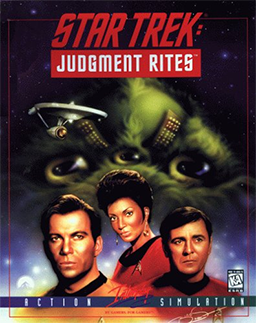
Star Trek: Judgment Rites is a computer game first produced by Interplay Productions in 1993, featuring the original cast of the classic Star Trek in a series of new adventures, including one featuring Trelane, the omnipotent child from the original episode "The Squire of Gothos". Judgment Rites uses the same MS-DOS game engine as the earlier Star Trek: 25th Anniversary; however, it had sharper graphics and sound, particularly with the CD-ROM edition. All of the initial cast members provided voices for their characters on the game in that edition. William Campbell also reprised his guest role as Trelane.

Titanic: Adventure Out of Time is a 1996 point-and-click adventure game developed by CyberFlix and published in the United States and United Kingdom by GTE Entertainment and Europress respectively, for Windows and Macintosh. It takes place in a virtual representation of the RMS Titanic, following a British spy who has been sent back in time to the night Titanic sank and must complete a previously failed mission to prevent World War I, the Russian Revolution, and World War II from occurring. The gameplay involves exploring the ship and solving puzzles. There are multiple outcomes and endings to the game depending on the player's interactions with characters and use of items.

Aliens Versus Predator is a 1999 science fiction first-person shooter video game developed by Rebellion Developments and published by Fox Interactive for Microsoft Windows, Mac OS, and Mac OS X. It is a part of the Alien and Predator crossover franchise, Alien vs. Predator. A sequel, Aliens Versus Predator 2, was developed by Monolith Productions and released by Sierra in 2001.

POD: Planet of Death is a futuristic racing video game for Microsoft Windows released by Ubi Soft in 1997.

Master of Orion II: Battle at Antares is a 4X turn-based strategy game set in space, designed by Steve Barcia and Ken Burd, and developed by Simtex, who developed its predecessor Master of Orion and Master of Magic. The PC version was published by MicroProse in 1996, and the Macintosh version a year later by MacSoft, in partnership with MicroProse. The game has retained a large fan base, and is still played online.

Return to Krondor is a role-playing video game set in Raymond Feist's fictional fantasy setting of Midkemia. A sequel to 1993's Betrayal at Krondor, it was released for Windows on the PC in time for the 1998 Thanksgiving and Christmas season. Within the game, the player commands a group of heroes with different attributes, strengths, and weaknesses which the player may upgrade over the course of the game.

The Elder Scrolls II: Daggerfall is an open-world, action role-playing game published by Bethesda Softworks. The second video game in the Elder Scrolls series, it was released on September 20, 1996 for MS-DOS, following the success of 1994's The Elder Scrolls: Arena. The story follows the player, sent by the Emperor, to free the ghost of King Lysandus from his earthly shackles and discover what happened to a letter sent from the Emperor to the former queen of Daggerfall.

Wizardry VII: Crusaders of the Dark Savant is the seventh title in the Wizardry series of role-playing video games by Sir-Tech Software, Inc., preceding Wizardry 8 and succeeding Wizardry VI: Bane of the Cosmic Forge. It is also the second entry in the 'Dark Savant' trilogy. The game was published in 1992 by Sir-Tech, originally developed for DOS. In 1996 it was remade into Wizardry Gold, designed to work on Windows and Macintosh, and distributed by Interplay.
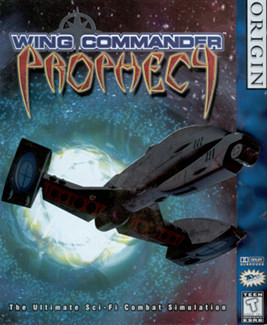
Wing Commander: Prophecy is the fifth installment in the Wing Commander science fiction space combat simulator franchise of computer games. The game was originally released in 1997 for Windows, produced by Origin Systems and distributed by Electronic Arts, and in 2003, a GBA conversion was produced by Italy-based Raylight Studios and distributed by Destination Software.

The Settlers II, originally released as The Settlers II: Veni, Vidi, Vici, is a city-building game with real-time strategy elements, developed and published by Blue Byte Software. Released in Germany for DOS in April 1996, and in the United Kingdom and North America in August, it is the second game in The Settlers series, following The Settlers (1993). In December, Blue Byte released an expansion, The Settlers II Mission CD, featuring new single-player campaign missions, new maps for both single-player and multiplayer modes, and a map editor. In October 1997, they released The Settlers II: Gold Edition, containing the original game, plus the Mission CD expansion, along with minor graphical enhancements and gameplay tweaks. The Gold Edition was also ported to Mac OS in 1997. In 2006, an enhanced remake, The Settlers II , was released for Microsoft Windows. In 2007, the Gold Edition was ported to the Nintendo DS, under the title The Settlers, released in Germany in July, and in the United Kingdom and North America in August. Although adapted for the dual-screen display of the DS, and with controls specifically programmed for use with the DS stylus, the gameplay, game mechanics, graphics and storyline are unaltered. In 2009, the original Gold Edition was released on GOG.com, and in 2018, it was re-released for Microsoft Windows as The Settlers II: Veni, Vidi, Vici - History Edition.
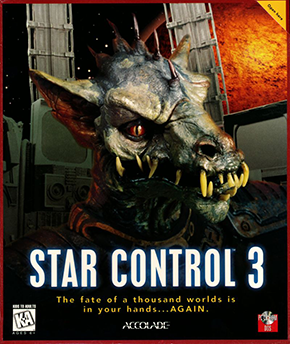
Star Control 3 is a 1996 action-adventure game developed by Legend Entertainment and published by Accolade. The third installment in the Star Control trilogy, the game was released for MS-DOS in 1996 and Mac OS in 1998. The story takes place after Star Control II, beginning with a disaster that disrupts superluminal travel through hyperspace. This leads the player to investigate a new quadrant of space, joined by allied aliens from the previous games.
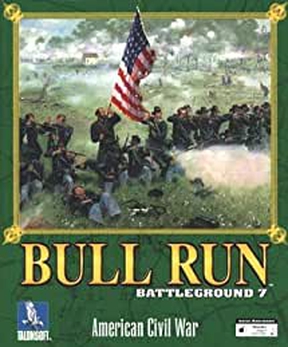
Battleground 7: Bull Run is a 1997 computer wargame developed and published by TalonSoft. It is the seventh entry in the Battleground series.
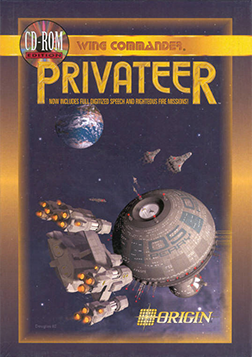
Wing Commander: Privateer is an adventure space trading and combat simulator computer game released by Origin Systems in September 1993. Privateer and its storyline is part of the Wing Commander series. The player takes the role of Grayson Burrows, a "privateer" who travels through the Gemini Sector, one of many sectors in the Wing Commander universe. Unlike Wing Commander, the player is no longer a navy pilot, but a freelancer who can choose to be a pirate, a merchant, a mercenary or any of the above in some combination. The player may follow the built-in plot but is free to adventure on his own, even after the plot has been completed.

Ambermoon is a role-playing game developed and published by Thalion Software, released in 1993 for the Amiga. It was the second part of an unfinished trilogy.

Lands of Lore: Guardians of Destiny is a 1997 action role-playing game, second installment of the Lands of Lore series, a sequel to Lands of Lore: The Throne of Chaos. It brought about a drastic change in gameplay style from its predecessor, opting away from the original's D&D turn-based style in favor of more action elements. A sequel, Lands of Lore III, was released in 1999.

7th Legion is a real-time strategy video game for Microsoft Windows, developed by Vision Software and Epic MegaGames and published by MicroProse in 1997. The game consists of two single-player campaigns and supports multiplayer online games. Tommo re-released the game on GOG.com in February 2014, but without multiplayer. In a joint effort, Nintendo was going to help Epic MegaGames port the game to Nintendo 64, but this port did not come to release.
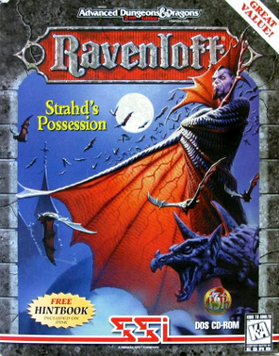
Ravenloft: Strahd's Possession is a 1994 fantasy role-playing video game developed by DreamForge Intertainment for Strategic Simulations for DOS. Ravenloft: Stone Prophet is a sequel to this game.
Battleground is a series of turn-based computer wargames developed and published by TalonSoft for Microsoft Windows between 1995 and 1999. Nine games were released in the series, each based on a different historical battle.

Uprising: Join or Die, also known as simply Uprising, is an action real-time strategy video game by American developer Cyclone Studios, released in North America on October 14, 1997 and in Japan on July 24, 1998 for Windows. The player controls a powerful combat vehicle known as the Wraith that transports rebel units onto the battlefield, fighting against the military. For the first few months of its development, it had no script written for it and as the release date neared, gameplay videos were created to demonstrate its support for the 3dfx graphics card. It received a port to the PlayStation as Uprising X, which was released in December 1998; and before that, a sequel, Uprising 2: Lead and Destroy, was released for the PC on December 9, 1998.


















